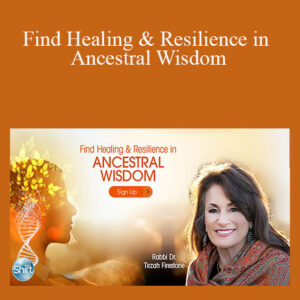Why is anthropology such an inherently fascinating subject? Because it’s all about us: human beings. As the “science of humanity,” anthropology can help us understand virtually anything about ourselves—from our political and economic systems, to why we get married, to how we decide to buy a particular bottle of wine.
Here are just a few of the intriguing questions anthropologists study:
- What does it mean if someone raises his eyebrows when he meets you?
- Is there such a thing as progress? Are modern technological nations really happier and better off than “primitive” hunter-gatherer societies?
- What is the cultural significance of gift giving? What are the subtle social and psychological rules we follow when we give a gift, and what obligates us when we receive one?
- How common is cannibalism today? What are the types of cannibalism and the beliefs associated with them?
- In American garbage dumps, what item of trash serves as a clear stratographic layer, distinguishing one-year’s trash from the next?
- What’s the difference between a matriarchal and a matrilineal society? Which is more common among world cultures?
- Why are Starbucks coffee shops, reality TV shows, and tourist destinations such as Las Vegas and Disneyland so popular with American consumers?
In Peoples and Cultures of the World, Professor Edward F. Fischer reveals the extraordinary power of anthropology—and his subspecialty, cultural anthropology—as a tool to understand the world’s varied human societies, including our own. As a science that incorporates many disciplines, including psychology, biology and genetics, politics, economics, and religion, anthropology probes human behavior from nearly every possible perspective.
This course gives you an opportunity to survey the full scope of the field of cultural anthropology. Professor Fischer examines the contributions of the profession’s most noted scholars, from founders and early popularizers Franz Boas, Bronislaw Malinowski, and Margaret Mead to more contemporary researchers, including Napoleon Chagnon, Marvin Harris, Marshall Sahlins, and Nancy Scheper-Hughes.
These lectures will immerse you in the world of the Trobriand Islanders of Melanesia, the Yanomamö of the Brazilian Amazon; the Dobe Ju/’hoansi, or !Kung Bushmen, of Botswana and Namibia; and other indigenous peoples. In addition, they offer a glimpse into the lives of cultural anthropologists themselves—the theories and methodologies they use and the experiences of fieldwork—living for extended periods of time within the cultures they study.
By the end of this course, you will appreciate how valuable an understanding of cultural anthropology is in a world of ever-increasing globalization, in which members of even the most remote cultures come into more frequent and more influential contact through international travel, migration, business, and the Internet.
And you may be surprised at the many ways cultural anthropology affects your daily life. Here’s one: Major corporations hire cultural anthropologists to create products—the PT Cruiser automobile, for example, was designed in consultation with French cultural anthropologist Clotaire Rapaille—that will have even greater appeal to customers and to find ways to advertise and sell them more effectively.
Please note: This course contains some frank and graphic sexual discussions where relevant.
What Is Normal? Marriage, Magic, and Cannibalism
Professor Fischer’s goal is to expose you to the astonishing extent of human and cultural diversity in the world. You will question your assumptions about what is natural or what is human nature, and explore cultural phenomena that, to us, seem odd, quirky, exotic, and even repulsive. These include:
Marriage rituals. In the Sandbadham marriages of the Nayar of West India, a woman can have up to 20 visiting husbands. Separately, each husband can visit and stay with her at night, but he returns to live with his sister’s family by day.
Kinship ties. Matrilineal societies, such as the Trobriand Islanders, trace family lineage through the mother’s family, not the father’s. A woman’s brother functions more as a father to her children than does her husband. (In matrilineal societies, men are still the chiefs. Women would wield superior power in a matriarchy. However, no such societies currently exist.)
Gender issues. In Samoa, fa’fa’fines are men who wear women’s clothes, do women’s work, and are highly valued for their ability to function as men or women. In Western terms, fa’fa’fines consider themselves neither straight, gay, transvestite, male, or female, but as “something different,” a third gender.
Violence. The Yanomamö of Brazil value ferocity. To be an unokais, a man who has killed another man, is to be revered. Unokais are held in such esteem, in their view and in the view of all Yanomamö, that they have 2.5 times more wives, and three times more children, than other Yanomamö males.
Magic, spirits, and witchcraft. The Fulbe of northern Cameroon practice a combination of magic and Islam. They believe that cannibal witches and river spirits can steal their souls. They protect their children from demons by placing amulets containing passages from the Koran around their necks.
Cannibalism. Although rare today, the most common form of cannibalism is endocannibalism: eating one’s deceased relatives. It’s considered a sign of respect, and a way to help their spirits live on. The Yanomamö practice it by crushing the bones into a powder, mixing it into gruel, and drinking the mixture.
Incest. All cultures prohibit incest to some degree, but the definition—whether one can marry a first or second cousin, say—varies. And is this taboo based in biology, religion, or psychology? What can studies of Israeli Kibbutzim and Taiwanese exiles tell us about our reluctance to marry those we consider “family”?
Rites of Passage. The Sambia of Papua, New Guinea, initiate boys into adulthood in a process that involves physical and mental hardships similar to those that cults use to brainwash converts, and includes one of the most unusual customs ever witnessed by anthropologists: ritual homosexuality between older and younger boys.
As you review these customs, Professor Fischer describes the issues cultural anthropologists face in dealing with them.
How should we judge what other cultures do—or should we judge them at all?
What are the ethical implications of anthropologists’ interactions with indigenous peoples? Can they affect or even harm a culture by making a documentary film, or providing goods such as tools or food?
And what about cases, such as female circumcision or ritualized rape, when others’ customs conflict with our own sense of morality and human rights? How do anthropologists draw the line between respect for cultural differences and the need to take action?
Surprising Lessons about Ourselves
A second aim of this class is to show you what cultural anthropology can teach you about your own culture. Anthropologist Alfred Kroeber maintained that studying other cultures acts as a “mirror on humanity”: It teaches us as much about ourselves as it does others. Cultural anthropology encourages us to suspend our ethnocentrism, our belief that our way of living and understanding reality is the only or best way.
For example, many in the West think that mothers form an instant emotional bond with their newborn infants, and that this is a universal human trait. But in impoverished Alto de Cruzeiro in Brazil, mothers’ expectations for the survival of their infants are so low—the mortality rate is 50 percent—that they are emotionally detached from their newborns. They do not even grieve for them when they die.
Are modern Western societies really the most affluent? This notion is doubtful, at best, based on modern hunter-gatherers. The Dobe Ju/’hoansi never go to bed hungry, have virtually no unsatisfied wants, and work only 20 hours a week.
In several lectures, Professor Fischer looks directly at our culture by considering aspects of the U.S. economy and consumer behavior. Is our economy really based on rational decision-making, as economists and policy makers assert? If so, why do we eat cattle and pigs, but not horses? Why are we willing to shop around to save $10 on a clock radio, but not on a big screen TV? It’s the same savings: $10.
Or how does culture affect you as a consumer? Today, we Americans want products that say something about us: microbrewed beers or specialty wines that reflect our economic status or education, products that set us apart from other consumers. Why has the symbolic value of what we buy—the image they project—become just as important as their material value or utility?
A Teacher Who Lives His Work
What makes Professor Fischer such a compelling lecturer is the fact that he, like all cultural anthropologists, literally lives his work. His lectures deliver a tangible and often personal sense of life among native peoples, especially when he discusses his own research among contemporary Maya in Tecpán, Guatemala.
You will meet Anjelina, the Maya woman trained in both modern Western nursing and traditional Mayan midwife practices, who cared for Professor Fischer’s pregnant wife.
You will appreciate the terror and extreme violence—nighttime abductions and mass murder—that Professor Fischer’s friends in Tecpán endured as hapless victims of the struggle between the Guatemalan government and Marxist guerrillas in the late 1970s.
In addition, Professor Fischer makes sure you understand the customs of traditional societies by relating them to our way of doing things. For example, in chiefdom societies, the way chiefs redistribute goods to their subjects serves the same purpose as pork-barrel politics in the United States. Both enable leaders to solidify political power by showing how effective they are in providing for their people.
Is Globalization Good or Bad?
In the final lectures, Professor Fischer offers an anthropological perspective on a trend that is a prominent topic of discussion in politics, economics, and the news: globalization.
He highlights the “opaque” connections between First World economies and traditional cultures. Few Americans are aware that much of the broccoli they buy is grown by Mayan farmers in Guatemala. In fact, these farmers have been so successful that they have made broccoli one of the staple vegetables in the American diet: U.S. consumption of broccoli has increased 1,000 percent since the 1980s.
Globalization is changing indigenous cultures in surprising ways. In the 1980s, gold was discovered on land belonging to the Kayapo Indians, who live in the heart of the Amazon. With the resulting royalties, the Kayapo purchased shortwave radios and modern video technology, which they used to improve communication and political unity among far-flung Kayapo villages. They even have their own “air force”: a fleet of planes that patrols their lands in search of illegal loggers and gold miners.
Is globalization good or bad? Should we in the First World lament the effects of our culture on indigenous peoples—that the Maya now have cell phones, go to Internet cafes, and enjoy watching Hollywood action movies?
Cultural anthropology considers such questions but does not see them as essential or even necessary. Globalization is simply a part of human culture, which is an unstoppable force, a process of constant change. It frustrates us when we try to judge or label it. But it rewards us when we simply try to understand it, to use it to appreciate the bonds we share with the rest of humanity, and to see ourselves, and our own culture, in new and creative ways.
Get Download TTC – Peoples and Cultures of the World at coursesblock.com today!
Delivery Method
– After your purchase, you’ll see a View your orders link which goes to the Downloads page. Here, you can download all the files associated with your order.
– Downloads are available once your payment is confirmed, we’ll also send you a download notification email separate from any transaction notification emails you receive from coursesblock.com.
– Since it is a digital copy, our suggestion is to download and save it to your hard drive. In case the link is broken for any reason, please contact us and we will resend the new download link.
– If you cannot find the download link, please don’t worry about that. We will update and notify you as soon as possible at 8:00 AM – 8:00 PM (UTC 8).
Thank You For Shopping With Us!







